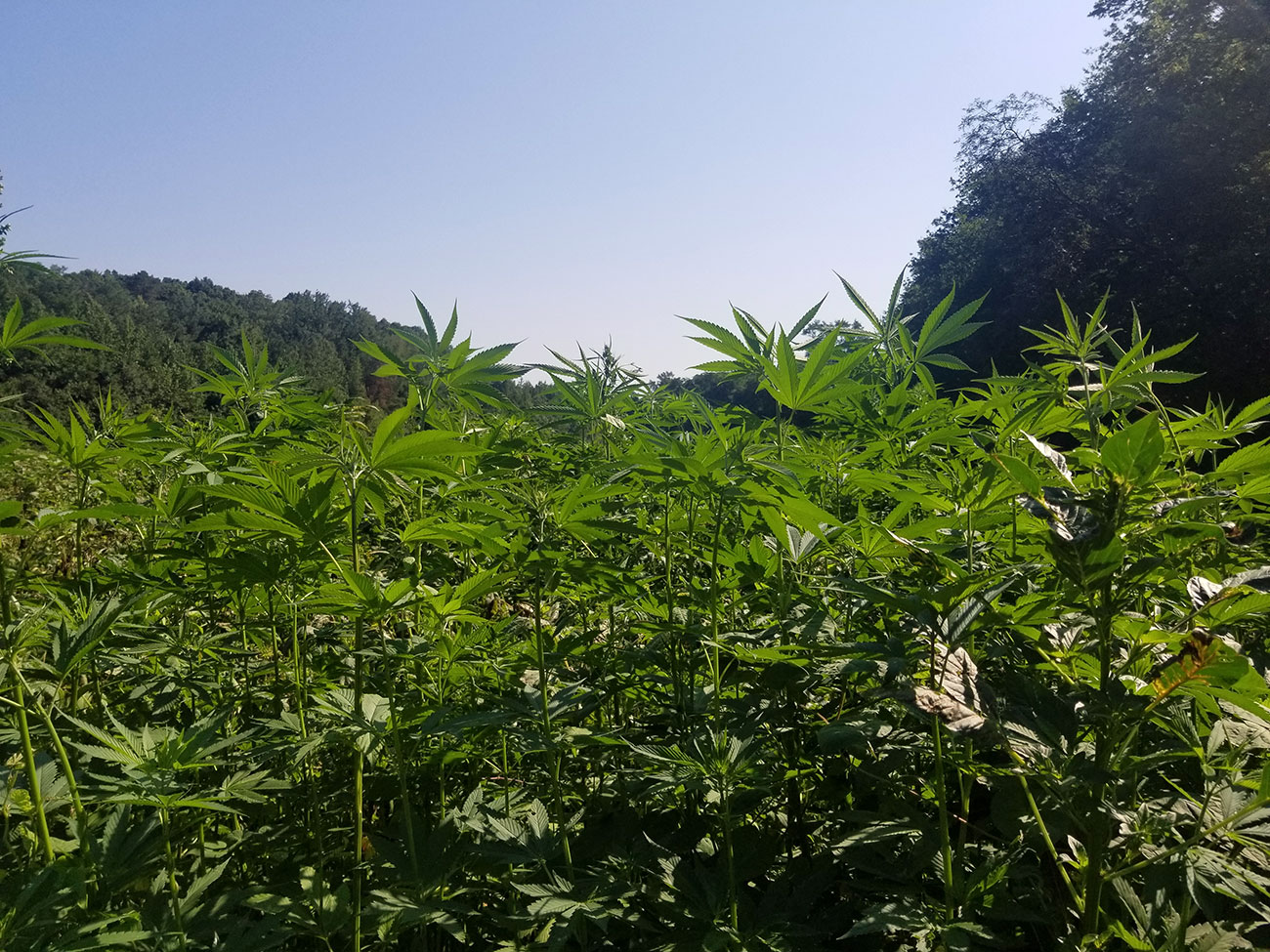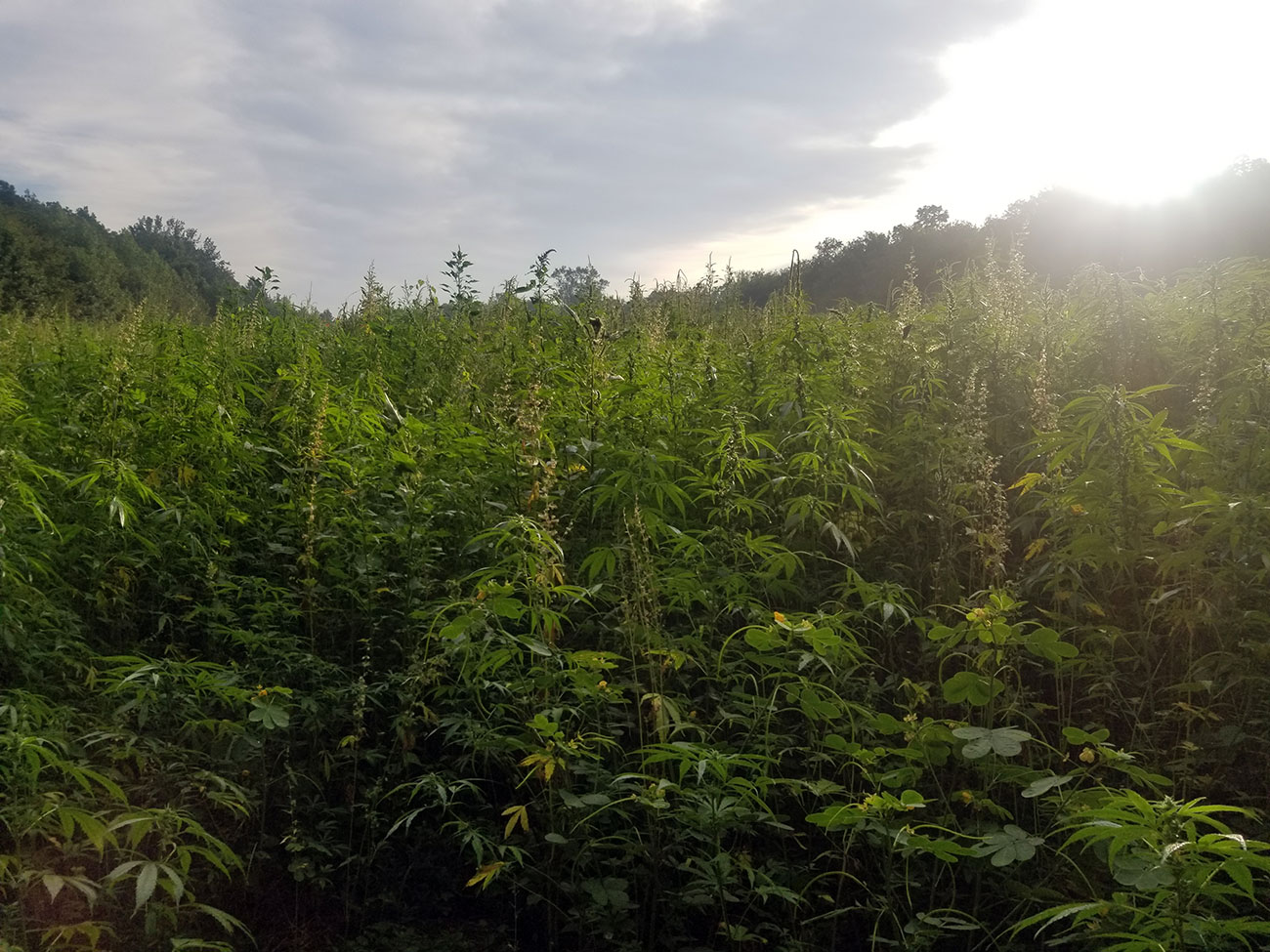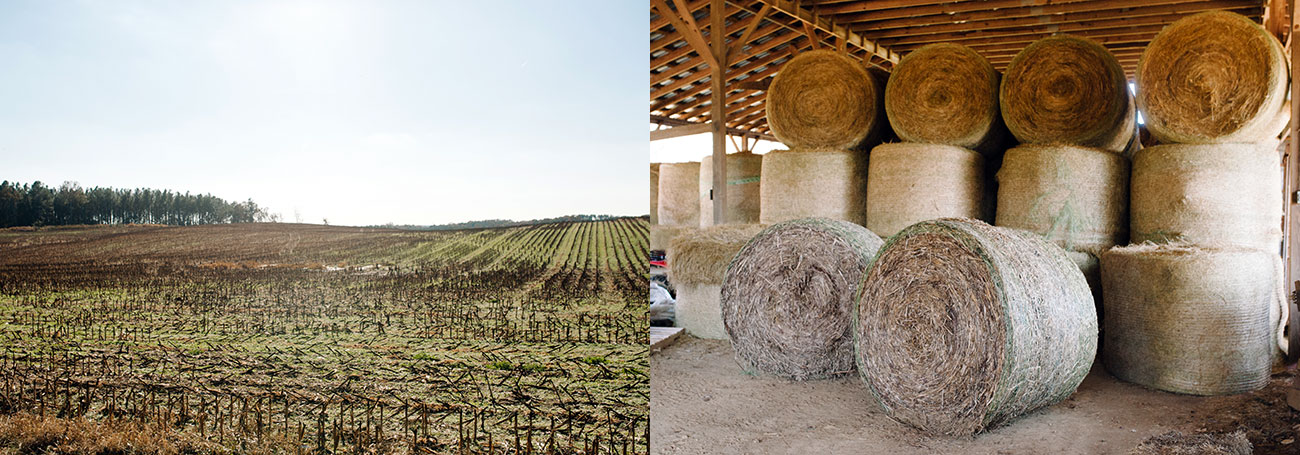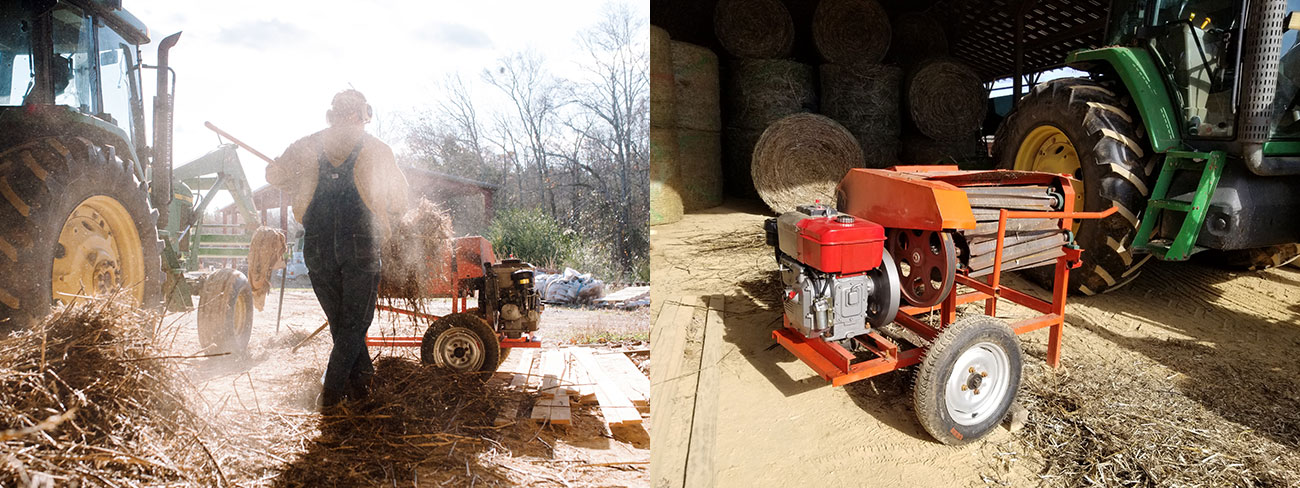One Acre Exchange supports the development of an agricultural economy centering the sustainability of farmers, workers, and the planet. In North Carolina and beyond, we support farmers and artisans in the growth and development of industrial hemp because of its tremendous potential to revitalize local economies and regenerate the environment. The focal objectives in 2019 are threefold: help organize an event featuring hemp fiber, seed and grow a hemp fiber crop, and provide raw materials for market-making activities. Read past articles including dispatches from the hemp fields that produced fiber and a fiber arts gallery show: click here for all One Acre Exchange articles.
Photographs by Tyler Jenkins and Anna Carson DeWitt

Three sites were selected for continued field research into growing industrial hemp in North Carolina for 2019. Set in the rolling hills of Anson County, near Charlotte, hemp is a potential boon to a place where commodity crops and forestry are four of the top five industries. Certified hemp seed was drilled onto plots of seven acres, four acres, and nine acres, at a rate of 100 pounds per acre. This is nearly twice what the recommended drill-seeding rate per acre is, yet this decision was considered a best option. It is best practice to acquire a germination test on a sample of seeds before setting out to hemp production, and this seed came back with a relatively poor rate of around 70%. In addition, drought throughout the North Carolina late spring and summer left the fields dry until June. Oil seeds need a damp bed to encourage a proper germination and to ensure oil doesn’t dry out. An ideal planting is one day after a gentle, one inch rain, and waiting on these conditions caused a delay into a less than ideal planting date of mid-June.

Throughout the following two weeks, one or two timely rains helped the cause. The nine acre field did not set a stand. The pressure from the pigweed (Amaranthus palmeri) was too much to overcome. A common farm sight, pigweed is a vigorous summer annual that is a constant competitor for sunlight and real estate. Knowing that planting near the beginning of summer would bring competition, we decided to try an organic herbicide (vinegar) before planting to give our crop a better chance. Rain is needed to bring the full effect of the vinegar treatment—receiving none, we anticipated some crop loss. The three acre field, on a slope next to an organic farm, was successful in putting out a stand. Weed pressure took to this as well, however, to the rate of about 50%. In the end, there were spots of dense stand (mostly near places water gathered), and patches of mixed weeds and hemp. Many of these weeds will dry out and crumble in processing, but yield calculations will need notifications of field conditions to help maintain accuracy.

Thankfully, the seven acre field grew quite well. Situated in a flat between a hill and a Riparian buffer, this field grew to a consistent 5-7 feet with a density of 7-10 plants per square foot, having a diameter ranging between a pencil and a pinky finger. As the crop began to flower (around 100 days for us), it was harvested with a sickle-bar mower, and allowed to begin retting in the field. It is essential to get some sort of rain or dew on the crop so the enzymatic breakdown can occur. After three weeks of no rain, we continued to let it sit for a least one cycle. Once retted and completely dry, the crop was windrowed and rolled into bales. (The decision to roll bale vs. bind this crop like wheat or flax ought to be explored further, as this decision changes the theoretical design of a processing layout and equipment moving down the line.)

After mowing, rolling, and setting, we moved the 64 bales, weighing around 600 pounds each, under a roof for shelter from rain but with wind exposure to keep dry. An initial trial run of the decorticator gave some key insights about the machine’s operation, and what parts of the process could be made more efficient. With the size machine we have, it seemed like a 2-3 person operation, depending on the consistency of fiber bundles and the speed at which the model needs to run to be successful. The next step for processing is a system of combing and carding devices to clean the bast fiber of any residual hurd, then select fibers for spinning or tow processing.
This growing season provided immense learnings, new data, and literal tons of hemp to process, which will inform the approach moving into 2020.

Tyler Jenkins lives in North Carolina and organizes One Acre Exchange and its work. Reach him at [email protected] and follow along on Instagram @one_acre_exchange





